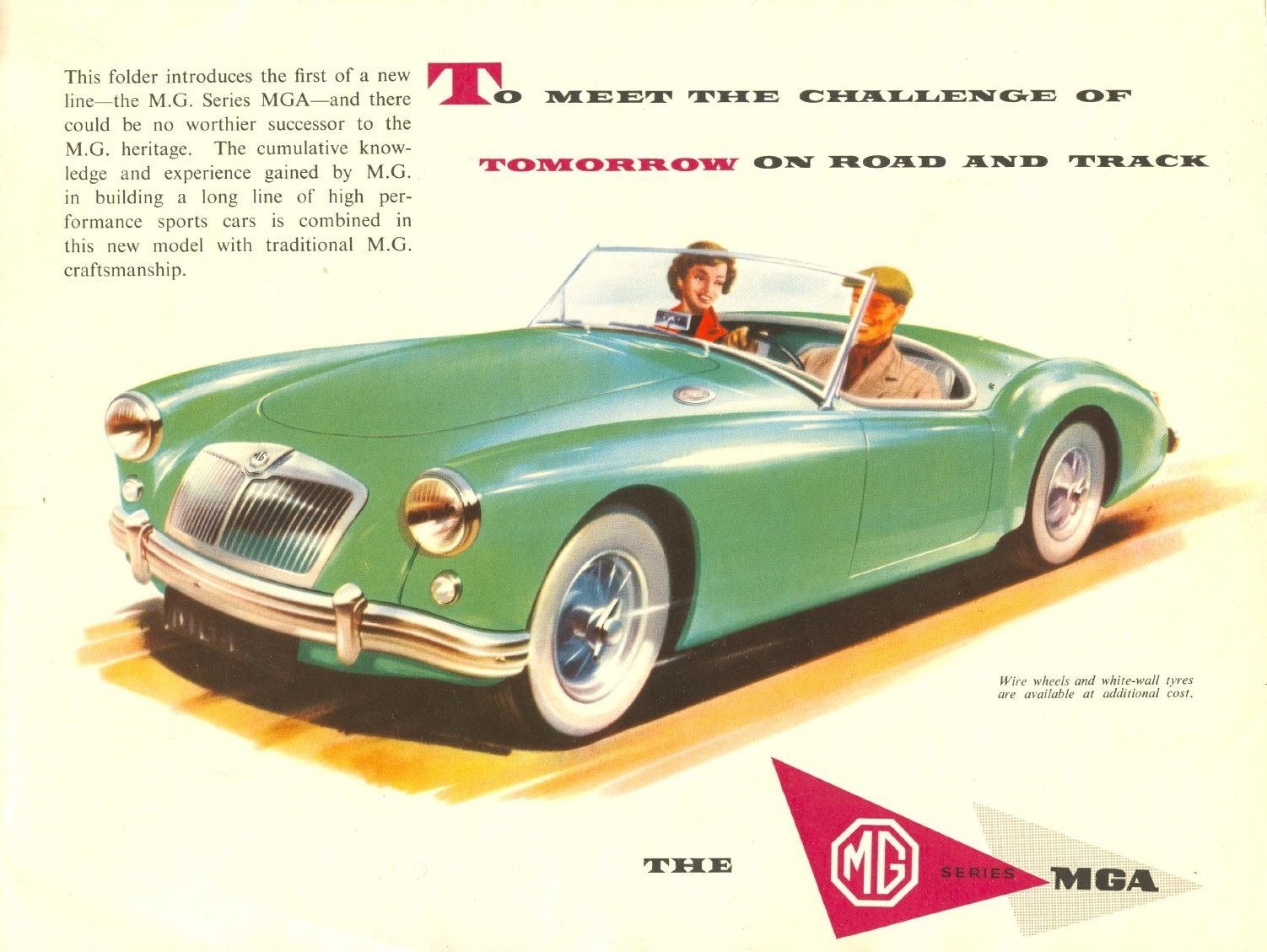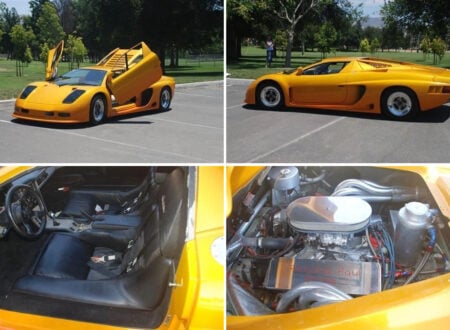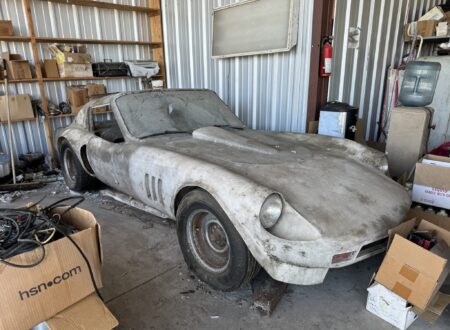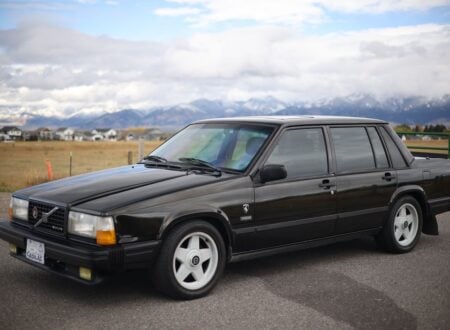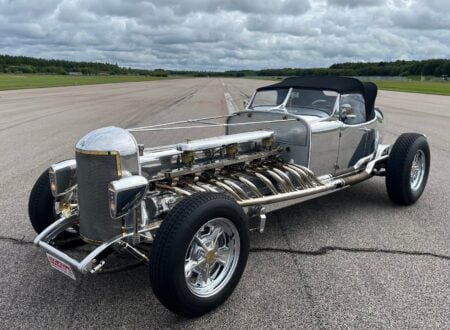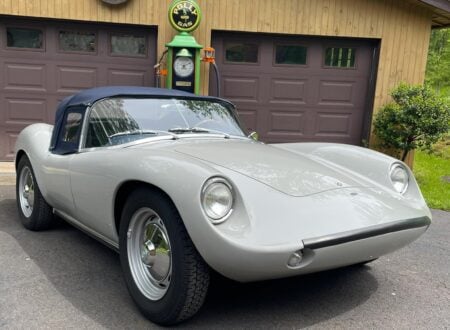The MGA – An Introduction + Background
The MGA was born out of two strands of activity; one was the American’s discovery of British sports cars in the years after the Second World War with the car responsible for that being the MG TC of 1945-1950.
The second was MG’s quest to be recognized as a serious sports car maker which meant that the company needed to be involved in motorsport and such things as setting speed and endurance records.
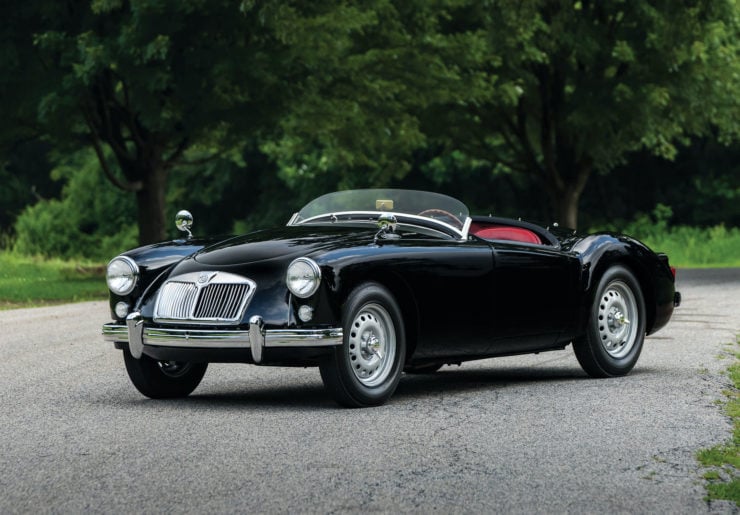
In the post World War II years the British Government faced a dire economic situation resulting from not just one world war, but two world wars with an economic depression sandwiched in between them.
The upshot of this for the British automotive industry was that they needed to create products for export so the nation could recover financially, and not only that but the steel required for production was rationed by the government with preference given to export products, so to manufacture anything an industry needed to be willing to “export or perish”.
The economic pressures led Morris along with the M.G. Car Company to join together with the Austin Motor Company in 1952 to form British Motor Corporation. This merger led to product rationalization with many Austin and Morris car models being largely identical save for the badges on them. This was referred to as “Badge engineering” and it served to keep the Austin, Morris, Wolseley, Riley, and MG brand names alive.
There was however a real risk that the MG as a sports car would be made to disappear. The MG Magnette sedan was updated in 1953 to be a remodeled Wolseley, and the successors to the MG TC, the MG TD, and MG TF were becoming as old fashioned as the British Morgan and in dire need of post-war modernization – but there was scant money or motivation available to create a new car.
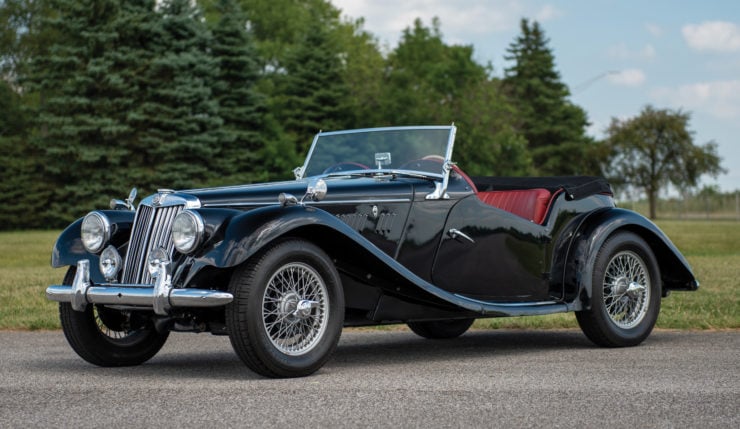
The major obstacle to the development of a new MG occurred because of the 1952 merger between Austin and Morris/MG. Leonard Lord of Austin had attempted to create a car specifically aimed at the American market.
But instead of being a sports car oozing character and excitement the car that Austin’s boffins created was the Austin A90 Atlantic: a car so awkward looking that only its creator could love it, a car that didn’t so much accelerate as “gain momentum”.
The Austin Atlantic had been an unmitigated disaster and by 1952 Austin’s Leonard Lord was rather desperate to find a real sports car with which to wow the Americans and save his company.
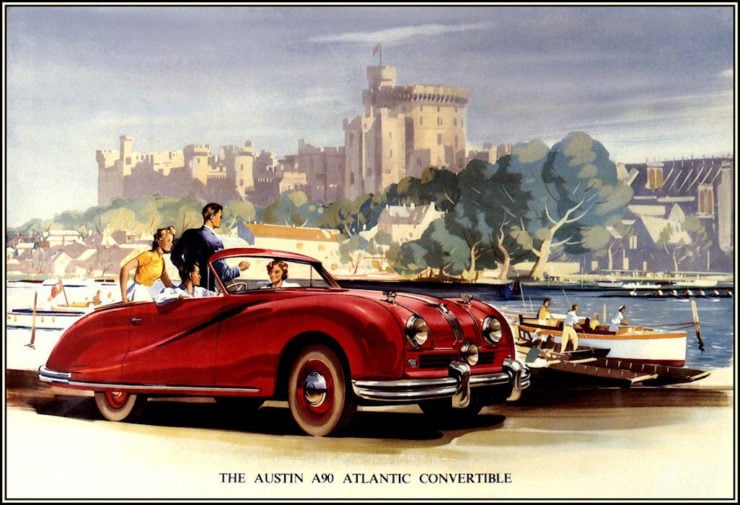
The Austin A90 Atlantic – A sales failure and a car with a divisive design.
It was as he wandered from stand to stand at the 1952 London Earls Court Motor Show that Leonard Lord had seen the car that could save his company. The car was at the stand of the Donald Healey Motor Company, it was made using predominantly Austin parts, and it was drop dead gorgeous.
It was so gorgeous that French actor and singer Sacha Distel would later buy one and use it to chauffeur actress Brigitte Bardot around.
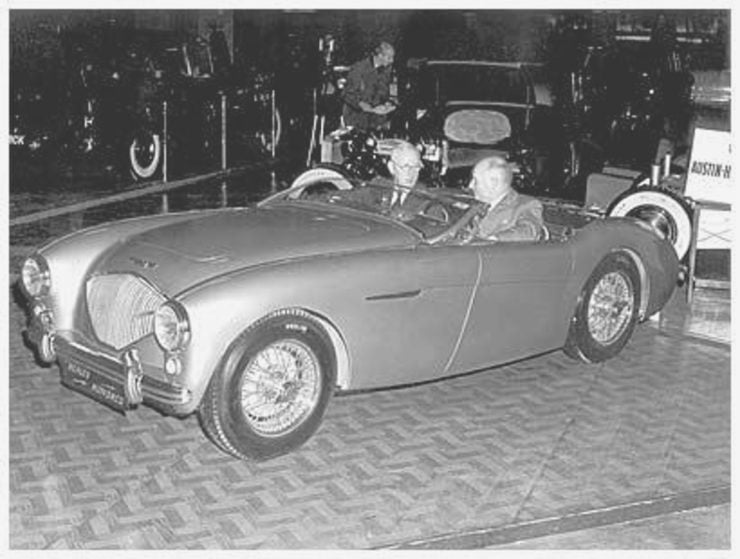
Leonard Lord (left) and Donald Healey (right) at the 1952 London Earls Court Motor Show in a Healey 100.
Leonard Lord and Donald Healey came to a mutually beneficial agreement over dinner that night and the Austin-Healey was born. That was good news for Leonard Lord and Austin, and good news for Donald Healey, but very bad news for MG and any hopes they had for producing a new MG sports car for the post-war era.
A new, modern looking MG sports car would be a direct competitor to the Austin-Healey and so senior management would be unlikely to support it.
The Development of the MGA
Despite its old fashioned looks the MG TD of 1950 was a fairly advanced sports car. It had an independent front suspension with coil springs, rack and pinion steering, and its engine was an MG XPAG 1,250cc OHV producing 57 bhp at 5,500 rpm.
This was the basis on which MG’s Chief Designer Syd Enever built a streamlined body for the 1951 24 Hours Le Mans motor race. This car was given project designation “EX176” and is typically referred to by its registration number UMG 400.
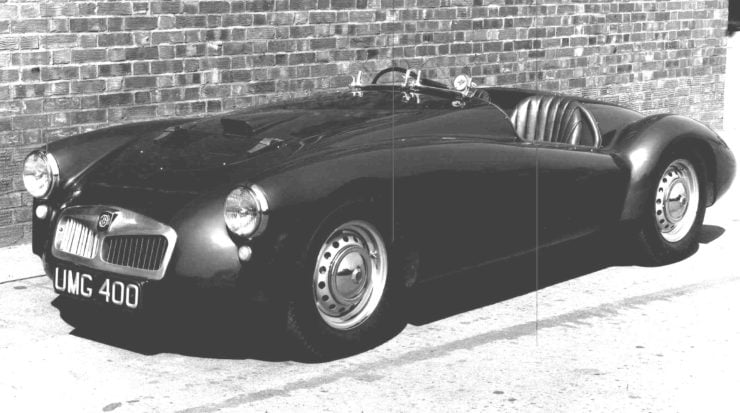
The Le Mans car proved to be so inspiring that two new chassis were created for a prototype future production car to replace the rather “old school” MG TF, and one of those was developed into a full road registered test car.
These two were designated “EX175” and the road registered test car was HMO 6. The new chassis was necessitated by limitations of the original MG TF chassis which placed the driver’s seating position up quite high, something that was not a problem in the MG TF but something that was a problem in a streamlined Le Mans car for which getting the driver’s seat lower was needed both to improve the car’s aerodynamics and lower the center of gravity.
The new chassis had its side members placed further apart so the driver’s seat could sit between them, and thus sit much lower. This meant that the cockpit floor was attached to the bottom of the chassis members instead of on top of them as in the MG TF.
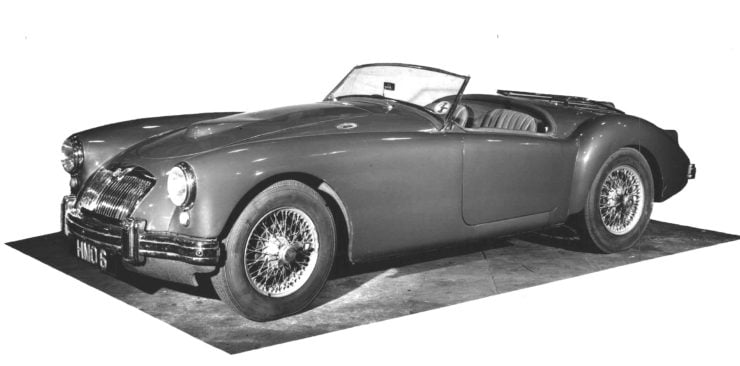
The new prototype was just as “drop dead gorgeous” as the Austin-Healey 100/4 but with the 1952 merger with Austin and their desire to push ahead with that car the going got rough for the prospects of a new MG sports car.
What tipped the scales was a precipitate nosedive in sales of the MG TF by 1953 that brought about a “something must be done because we’re losing lots of money” motivation factor that management were forced to act on. The new car was to be called the MGA, because it was to be the first of a new modern post-war breed of MG.
The new car did have features that originated from the Austin merger however. The MG T series XPAG engine was done away with and instead the MGA was fitted with an Austin B series inline four cylinder of 1,489cc capacity breathing through twin SU H4 carburetors producing 68hp.
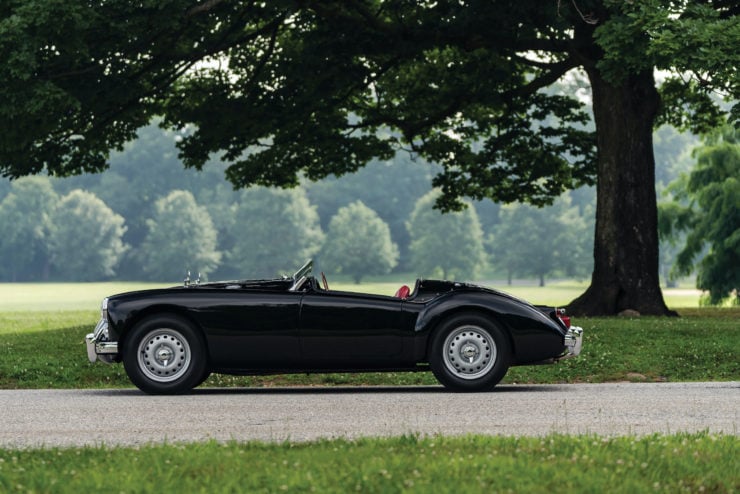
This was improved on to give the engine 72hp fairly soon after production commenced. This engine was the same as the one used in the badge engineered Wolseley derived MG Magnette saloon/sedan with which the MGA shared many common parts.
The front suspension was independent with wishbones and coil springs at the front and a traditional semi-elliptic leaf springs with live axle at the rear. The steering was by rack and pinion, much preferred by sports car enthusiasts, just as had been used on the MG T series cars: brakes were Lockheed drums front and rear.
So the end result was an aerodynamic car with head turning modern looks and subtle engineering improvements that was just as much fun to drive as its predecessors: it looked completely new, but it drove like an improved “real MG”.
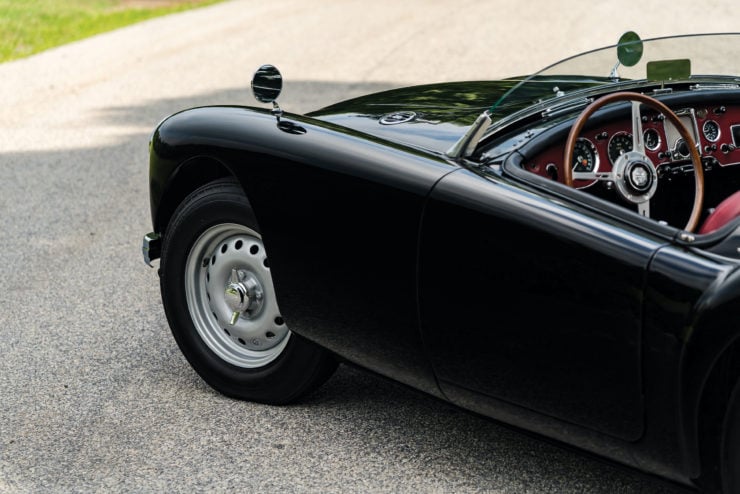
The new MGA 1500 tried hard to make “the ton” (i.e. 100mph) and almost made it with top speed on test being 97.8mph. Standing to 60mph time was 16 seconds and fuel consumption a modest 26.7 miles to the Imperial gallon (22mpg – US gallons).
The car made its debut in 1955 and was priced at £844 with taxes included. The first production cars were made as roadsters with the option of a detachable hard top. However BMC quickly also introduced a fixed head coupe complete with wind-up windows and good weatherproofing.
The coupe model was sold as an alternative style of car for the entire production run of the MGA and there were coupes produced of all models including the Twin Cam.
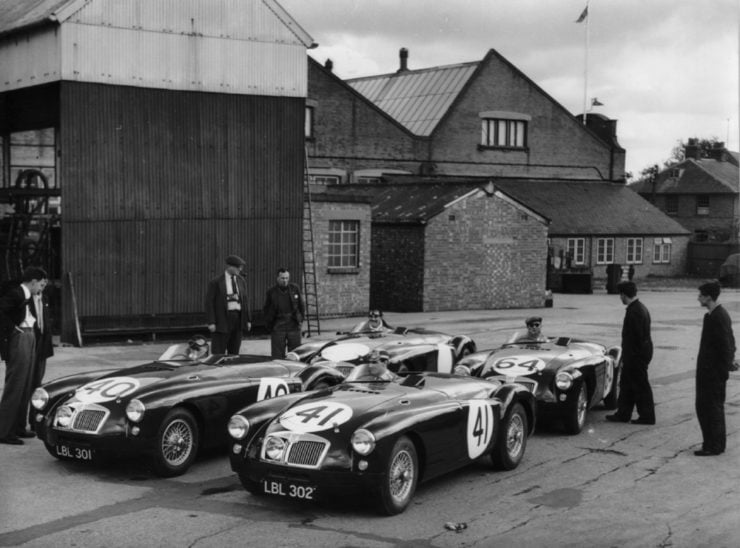
To make the MGA’s debut an event that would cause the sports car enthusiasts to take notice four cars were to be built, three to compete and one spare car prepared as entries in the 1955 24 Hours Le Mans. This group of cars were given the company designation EX182 and three competed in the race with one crashing and the other two finishing in 12th and 17th places.
That success was however clouded by the accident at the 1955 Le Mans which led to horrendous casualties when a car crashed at the end of the high speed Mulsanne Straight sending parts of the car including its engine and transmission hurtling through a spectator grandstand.
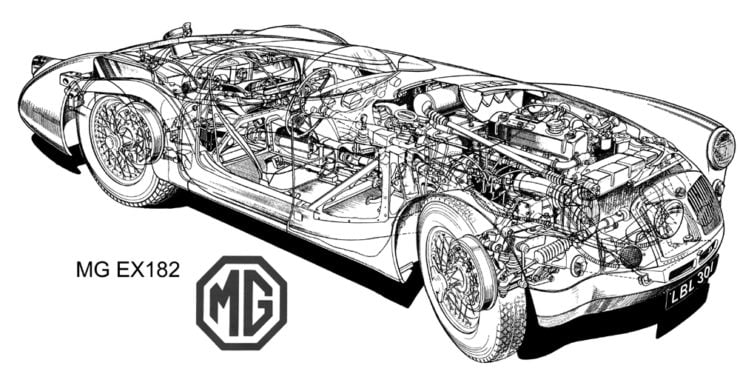
Prior to this in August and September of 1954 a specially prepared streamlined record breaking car, EX179 was created and taken to the Bonneville Salt Flats in the United States for a crack at a number of speed records. This car took no less than seven international records and 24 American National Class F records including a 12 hour and others between 250km and 200km.

The speed records and the creditable performance at the 1955 Le Mans served the purpose to launch the car with an appropriate level of “streed cred”.
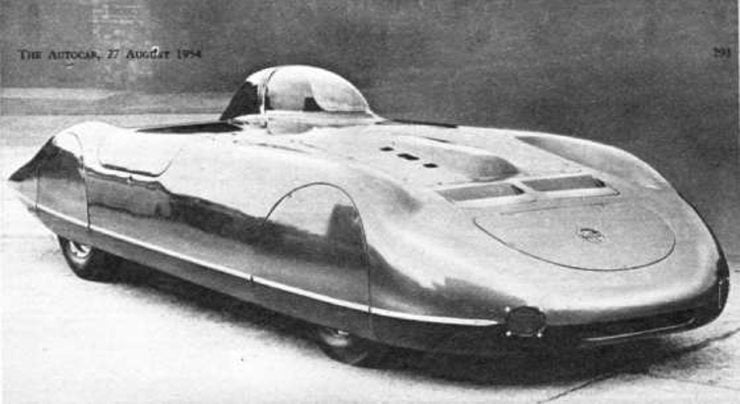
The MGA Twin Cam
With the MGA established as a production car there was, of course, motivation among the enthusiasts of the design and engineering heart of MG who wanted to turn it into an even more impressive performance car.
This was in part due to a desire by the North American dealers for a more powerful car, a desire that might have been best provided for by fitting a nice alloy V8 into it, something that would have to wait until late in MGB production. But the history, although veiled in mystery, tends to indicate that development work on a twin cam high performance MG engine predates the 1955 debut of the MGA.
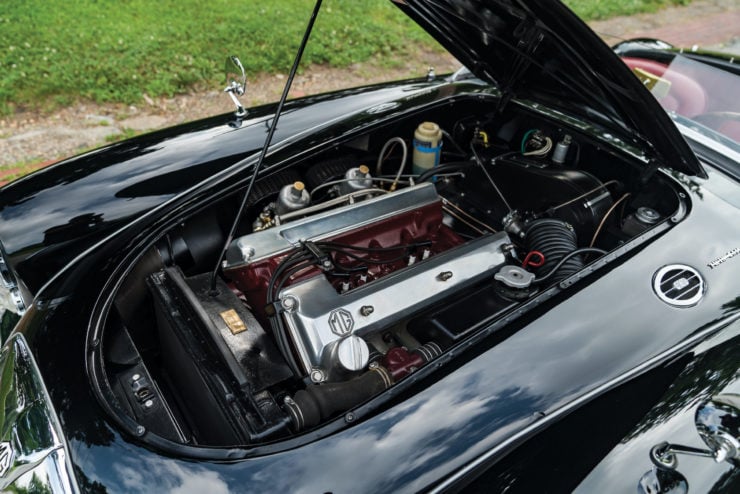
The twin cam MG engine was the result of a vision held by Director and General Manager John Thornley, Design Engineer Syd Enever and Alex Hounslow. The story of that engine begins in the design office of Morris, Cowley, and was the work of Gerald Palmer who was the design engineer in charge of MG and Riley development.
It was Palmer who designed a new twin OHC top end for the Morris “B” engine, something that could pretty much be bolted straight on. Palmer obtained the go-ahead from his director Vic Oak and the design was sent to Morris Engines Branch for creation of a prototype.
So it was by June of 1955 the project had been designated EX187 and plans were proceeding for that Morris “B” engine twin cam to be the star of a new high performance MGA model. The first entry in that project journal was for the “Dunlop Centre Lock Type Disc Wheel” that would be used on this new model.
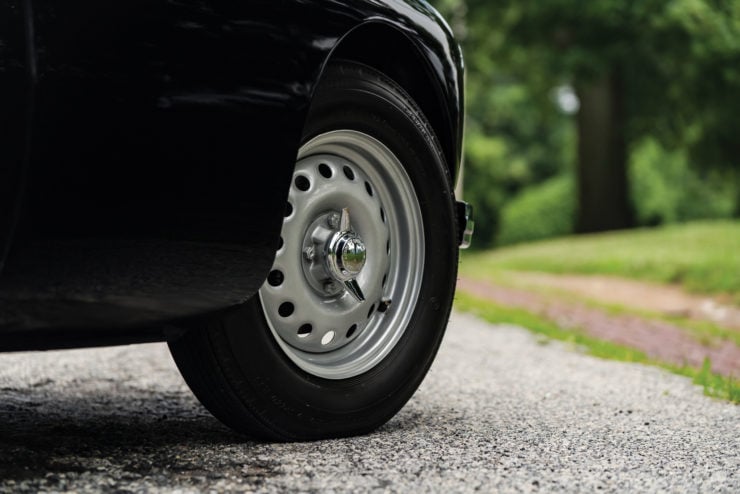
The MGA Twin Cam was created as a special performance model and it had been originally envisaged that it would be primarily sold to more knowledgeable enthusiast drivers who would know how to look after such a temperamental engine.
That lofty idea was quickly pushed aside however as the demand for this rather exotic high performance MGA was quite strong and so these cars finished up being purchased by drivers of all levels of knowledge, or lack thereof.
The MGA Twin Cam was fitted with the Dunlop Centre Lock Disc Wheels and had Girling disc brakes at the front and rear giving it much improved high speed braking. Other than that, some chassis modifications, and being fitted with the somewhat experimental Twin Cam engine the car was like the other production MGA’s. The Twin Cam engine had a compression ratio of 9.9:1 and breathed through twin SU B6 carburetors producing 108hp.
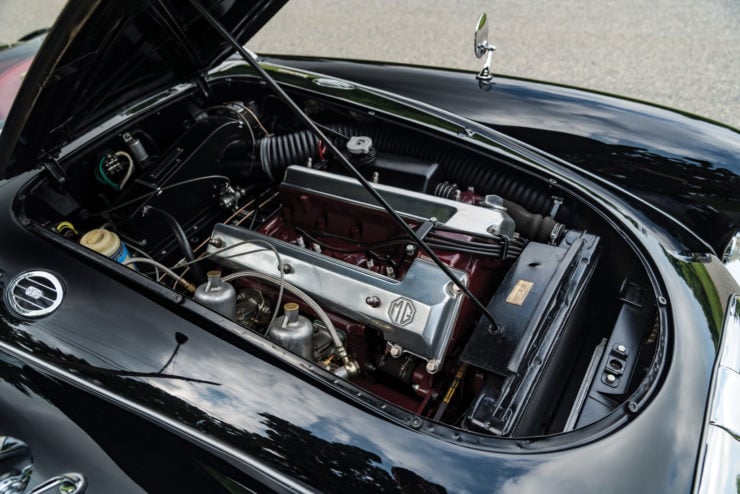
Once the MGA Twin Cam was in production in 1958 the gremlins reared their ugly little heads with the main problem being the engine’s propensity for getting holes in pistons, a holey piston being a cause for much wailing and gnashing of the teeth by both owner and dealer alike.
The reason for this was not discovered and would seem to be a mystery through to the present day. The Twin Cam’s pistons were quite highly domed and it was thought the problem was caused by detonation occurring, perhaps if the mixture became too lean under certain circumstances.
Various things were studied and tried but even a car which had the original SU carburetors removed and replaced with Webers produced the same holey piston problems. The problem was ameliorated by reducing the compression ratio from 9.9:1 to 8.3:1 but was not satisfactorily solved. The lower compression ratio engine produced 100hp.
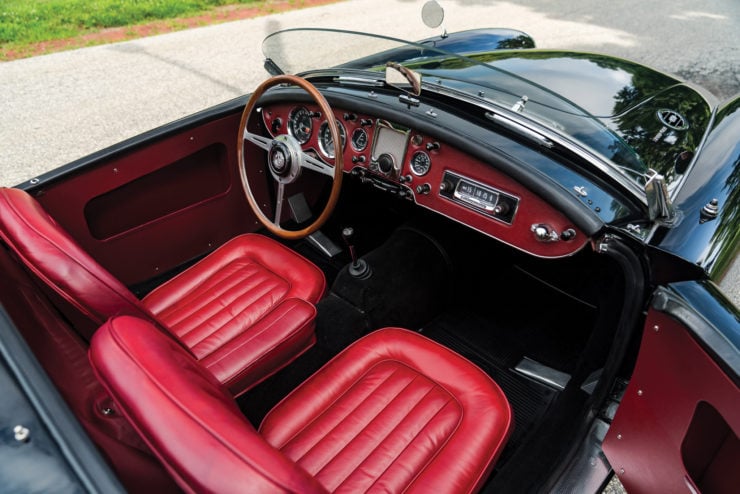
The performance of the high compression MGA Twin Cam was brisk: the car had a top speed of 113mph, could do a standing to 60mph in 9.1 seconds, and consumed fuel at a rate of 27 miles to the Imperial gallon (i.e. 23mpg US). The later lower compression ratio cars were of course a tad slower.
The Twin Cam was taken out of production in 1960 after only 2,111 cars had been produced. The price was £1,283 including taxes.
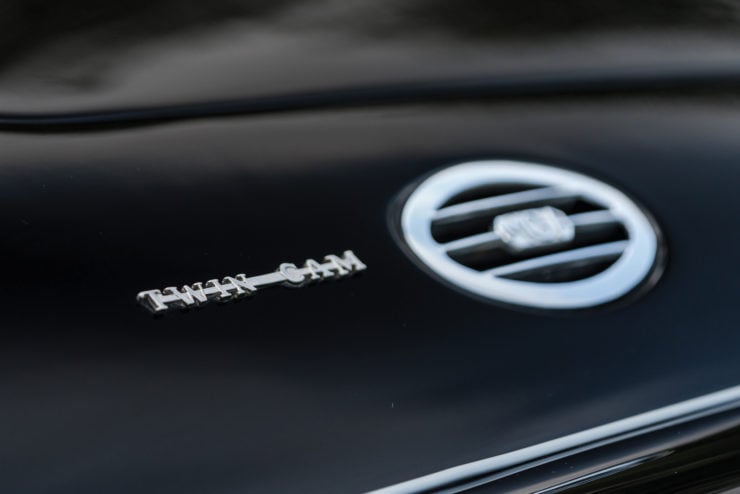
MGA 1600 and 1600 De-Luxe
The MGA 1600 first appeared in 1959 and was fitted with a 1,588cc producing 79.5 bhp. The car was also fitted with front Girling disc brakes, like its Twin Cam sibling, but retained drum brakes at the rear. This was a common layout during the 1960’s and 1970’s and may have been done for cost saving, but also may have been done given that drum brakes tended to provide better handbrake grip.
Externally the MGA 1600 looked much like its MGA 1500 predecessor with differences being in the badges and in parking and turn indicators depending on the market the model was sold in.
With the premature demise of the MGA Twin Cam there were Dunlop Centre Lock steel wheels and Twin Cam parts and chassis left over which were not to be allowed to go to waste. So these left over chassis complete with four wheel disc brakes and the Twin Cam center lock wheels were fitted with the 1,588cc engine and sold as the MGA 1600 De-Luxe. These are a fairly unusual model with only seventy roadsters and a dozen coupes being built.

The top speed of the MGA 1600 roadster on test was 96.1mph with a standing to 60mph time of 13.3 seconds and fuel consumption of 29.7 miles to the Imperial gallon (24.7mpg US). The MGA 1600 base model sold for £940 including taxes.
MGA Mark II and Mark II De-Luxe
The MGA Mark II was introduced in 1961 and was the last of the line being superseded in 1963 by the MGB. The MGA Mark II was fitted with a 1,622cc bored out version of the 1,588cc engine. This engine had other improvements including larger valves and re-designed combustion chambers.
As a result of these upgrades the engine power was raised to 90bhp and in-line with the road car’s primary use for high speed country touring the rear axle ratio was changed to 4.1 to reduce engine revs at speed and improve fuel consumption.
The main visual change for the Mark II was the inset front grille and the use of tail lamps from the trendy Morris Mini.
Top speed of the Mark II was 105mph with a standing to 60mph time of 12.8 seconds. These figures mean that the Mark II could achieve about the same level of performance as the low compression Twin Cam.
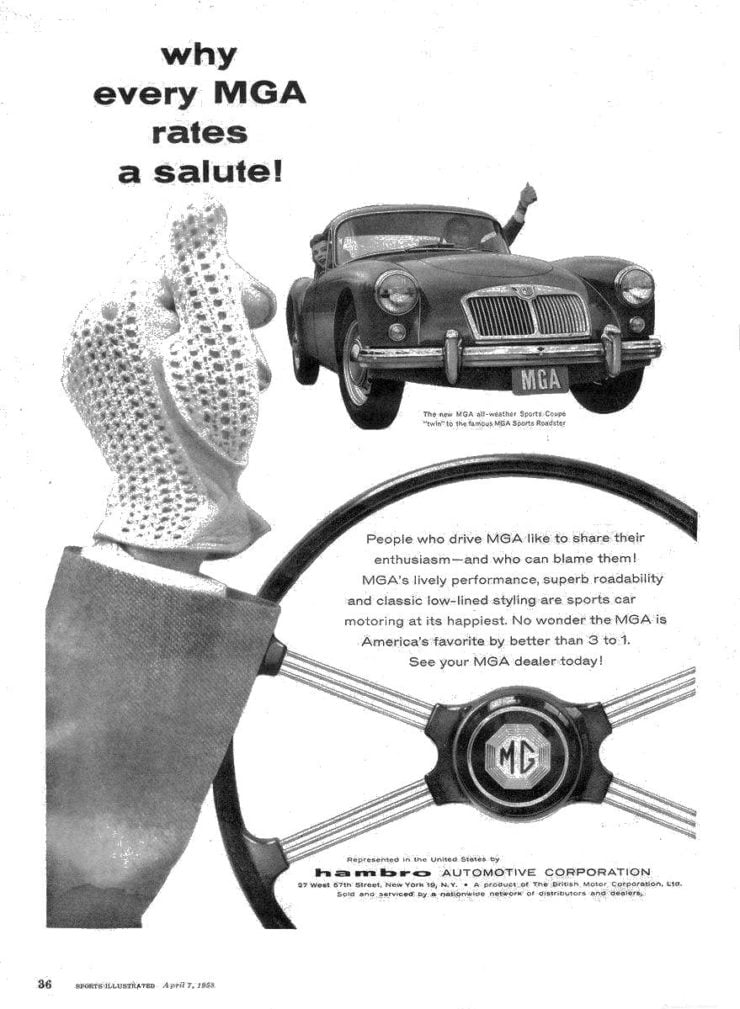
The MGA in Motorsport and the Speed Record Cars
The MGA came to be used quite extensively in motorsport despite the fact that BMC ceased participation in racing after the 1955 Le Mans crash. Preparation work had already been ongoing with a view to entering the 1956 Le Mans with a more streamlined MGA fitted with a Twin Cam engine and this car was given the project designation EX186.
With the ending of works participation in motor racing one of the EX182 1955 Le Mans cars was taken for an outing at the TT at Dunrod in Northern Ireland. After that BMC concentrated on rallying which would see the MGA being used prior to the Mini taking over as the mainstay rally car.
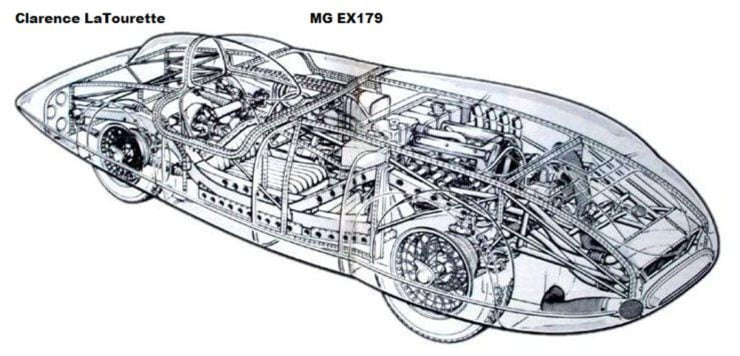
In addition to the record setting work done in 1954 prior to the MGA’s public release EX179 was prepared for another crack at some speed records, the attempts being scheduled for August 1956.
The car was fitted with a then experimental 1,489cc Twin Cam engine, not supercharged, and it managed a 12 hours run at an average of 141.71mph, with a maximum average speed of 170mph for 10 miles.

The speed record setting did not end there however and a new mid-engine car EX171 was created powered by a 1,489cc Twin Cam engine fitted with a Shorrock supercharger.
The new chassis and aerodynamic body meant that the only part this car shared with the MGA was the Twin Cam engine but it was taken to Bonneville and despite difficult weather conditions was driven by Stirling Moss to achieve a 245.64mph Flying Kilometer and a 245.11mph Flying Mile.
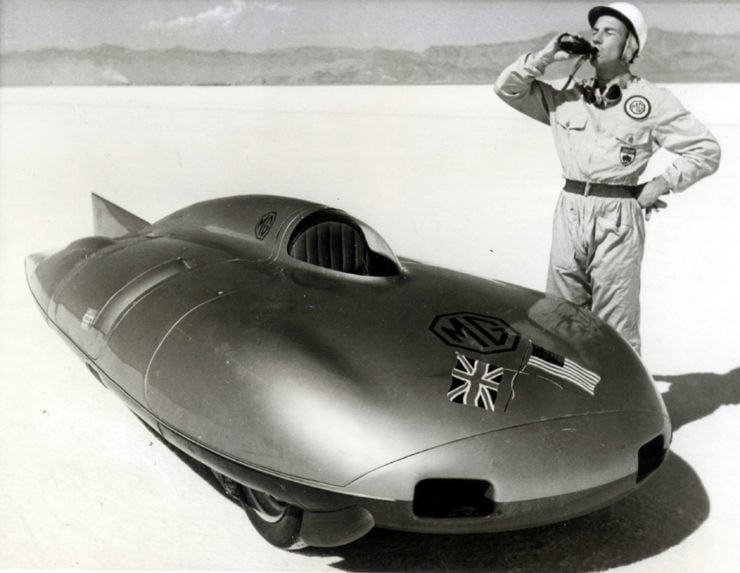
Stirling Moss with the EX171 at the Bonneville Salt Flats
The MGA has been privately been campaigned in racing and rallying and has proved itself to be a great track car. In Sports Car Club of America competition the MGA has won a number of championships most notably the car driven by Kent Prather attained a string of G Class wins over the years. The MGA began being used at Sebring from at least 1957 onwards.
Conclusion
The MGA stands out in the history of British sports cars as one of the iconic models of the post-war era along with the Austin-Healey and the Triumph TR series. It was derived from a design for a racing car and despite the business merger and the pressure not to create it the car was too good not to build. With its great performance, classic looks, and ease of maintenance this is a car that is very popular in classic racing circles.
For those looking for an iconic British sports car of the 1950’s and 1960’s an MGA would be a great choice.
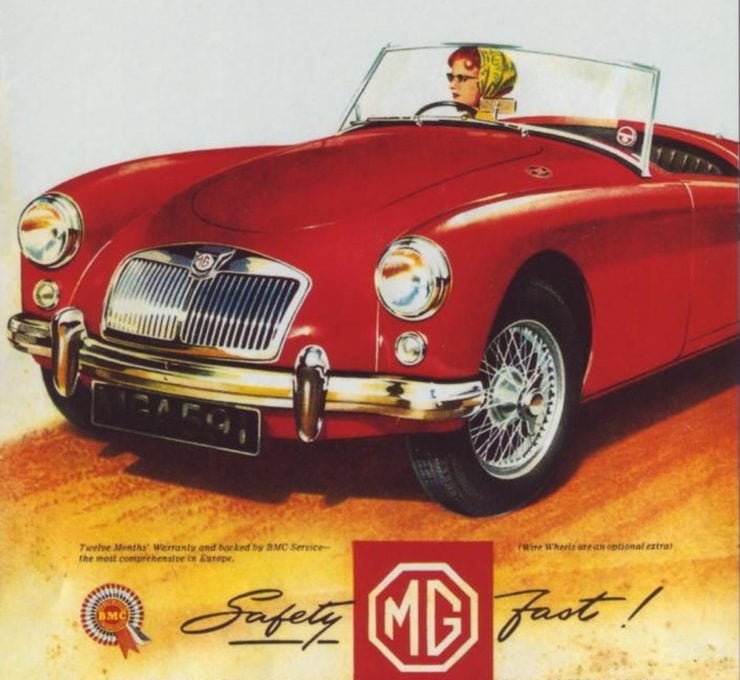
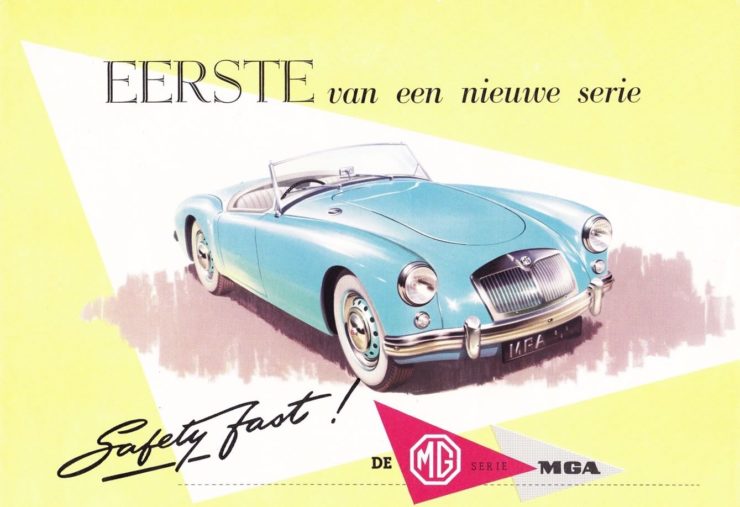
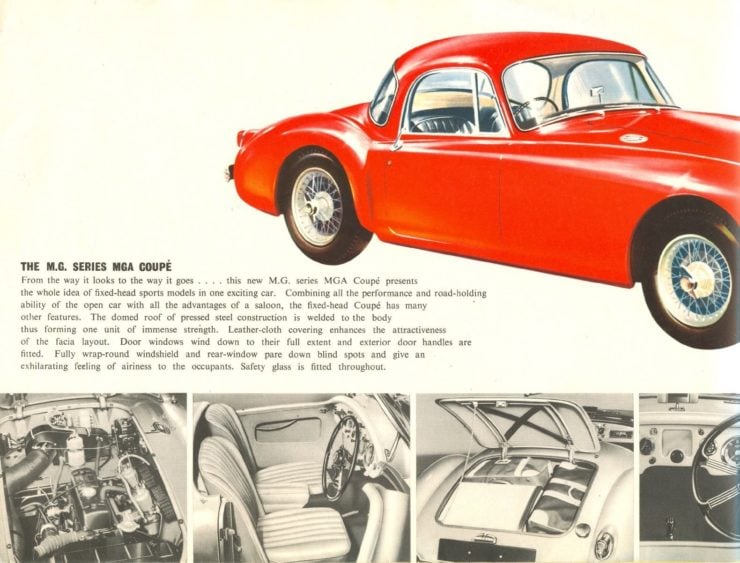
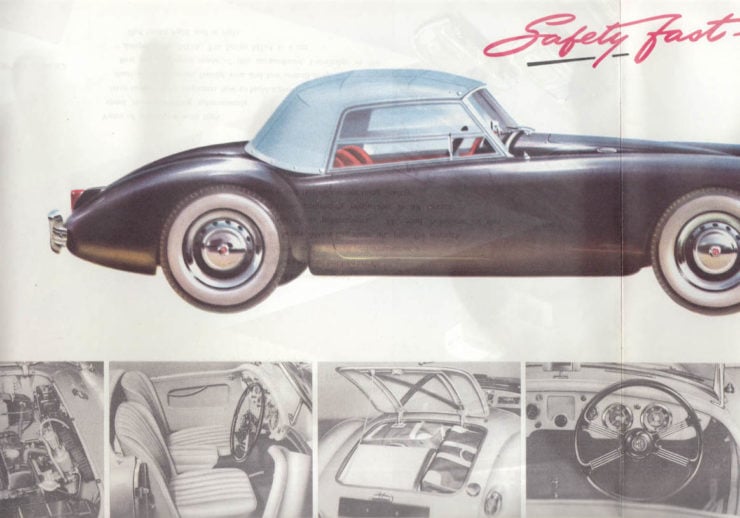
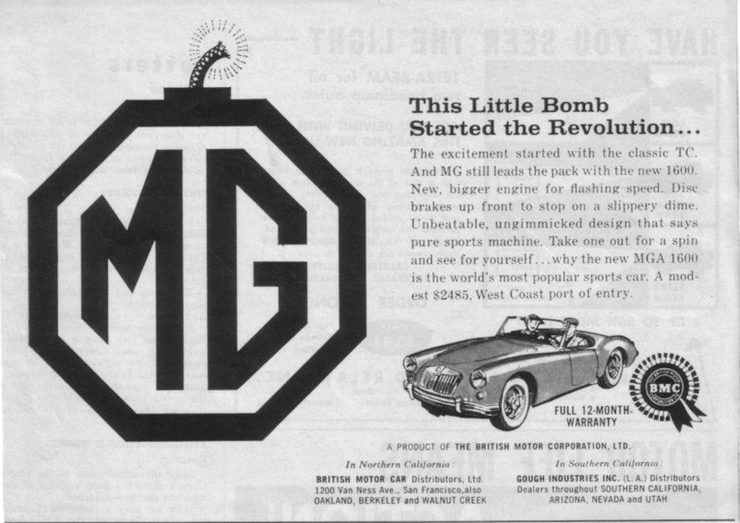
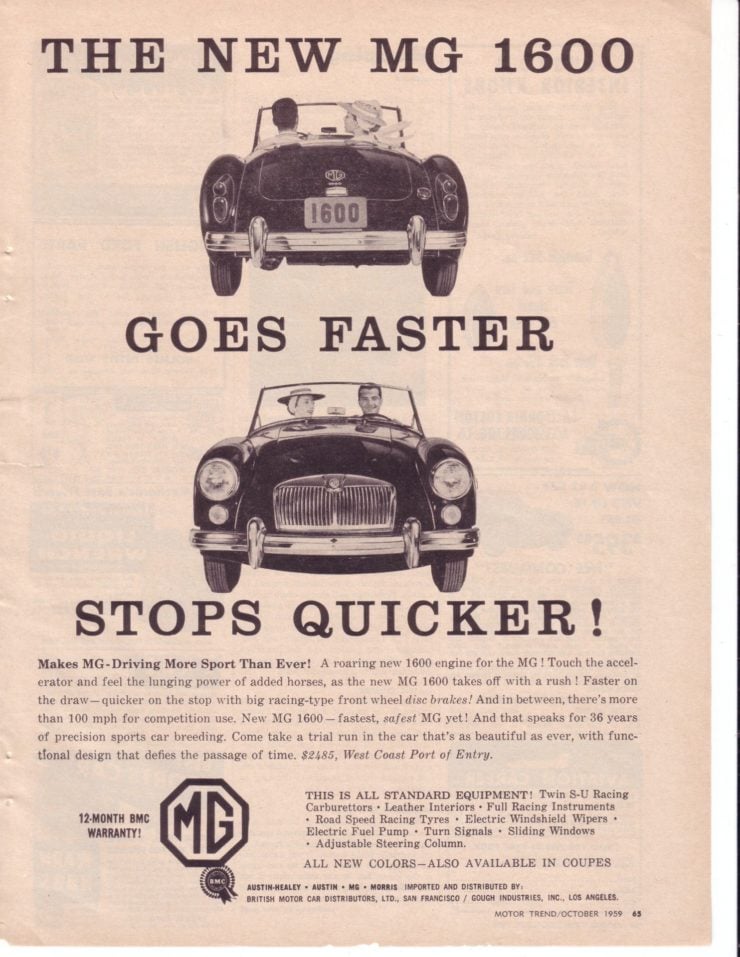
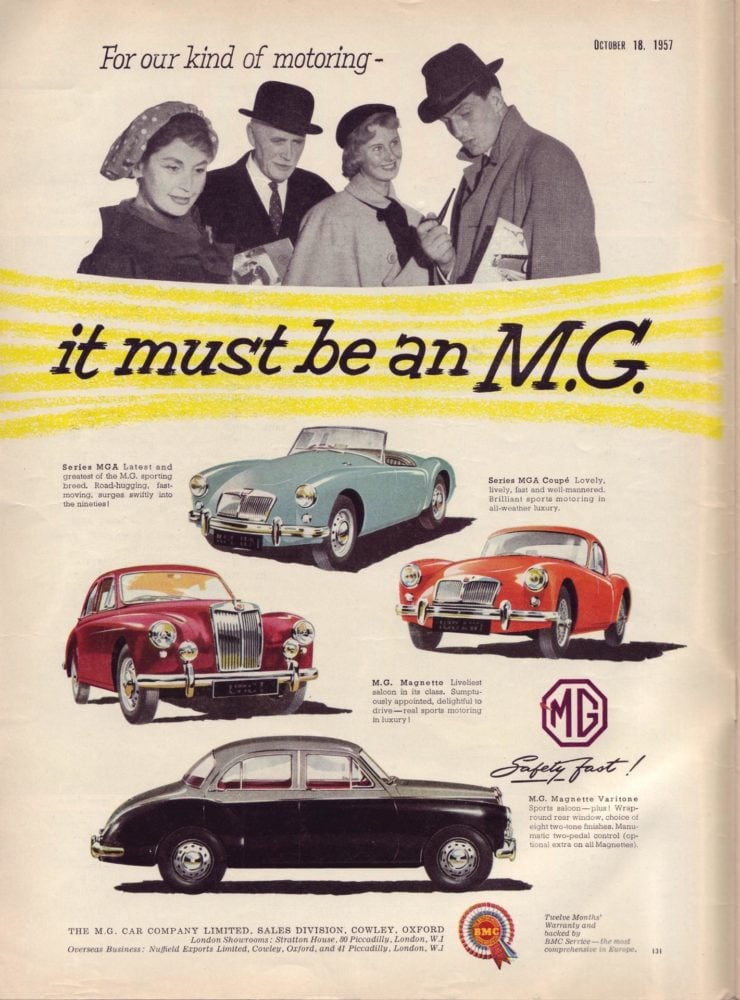
Photo Credits: MG, BMC, RM Sotheby’s.

